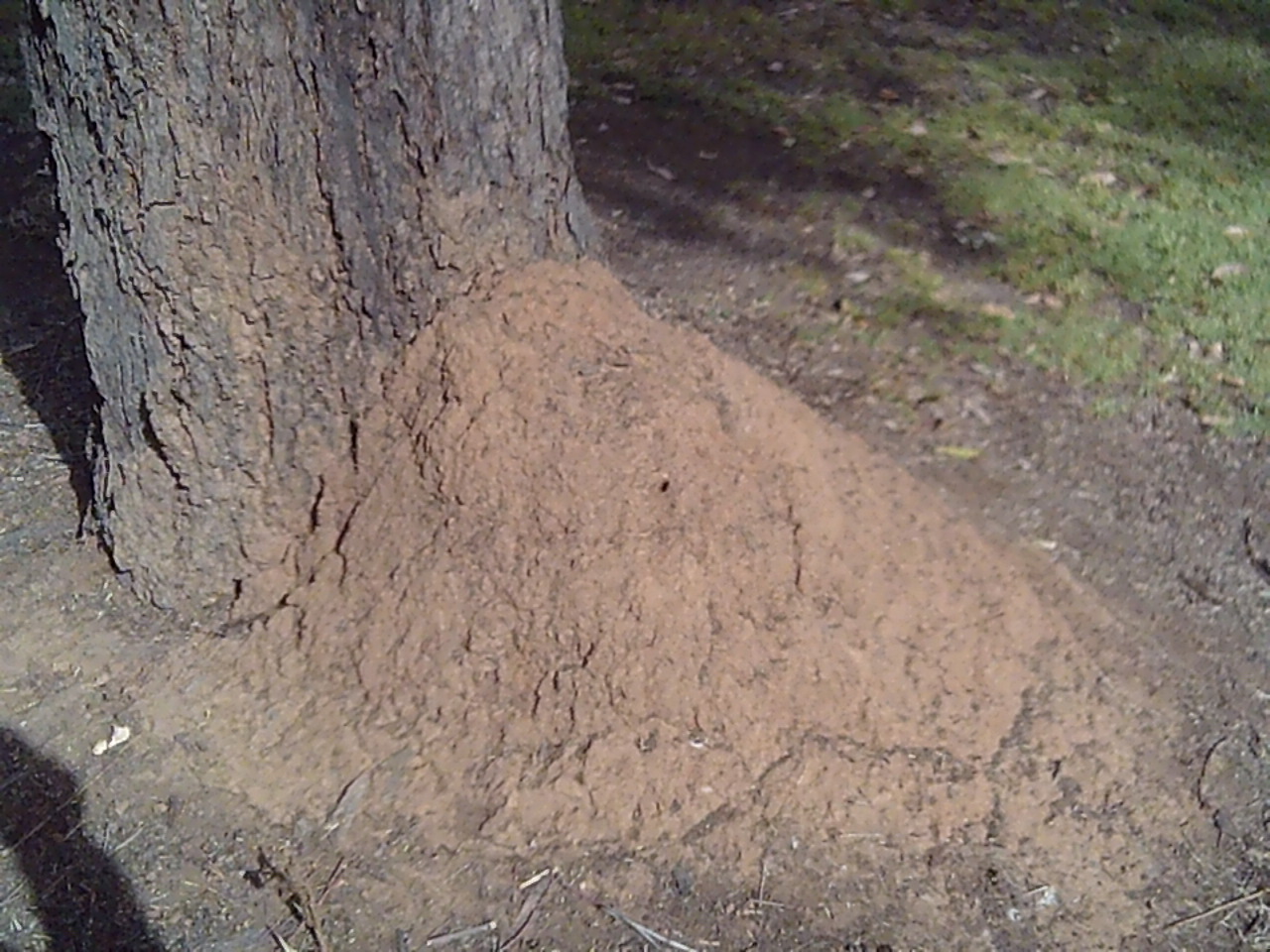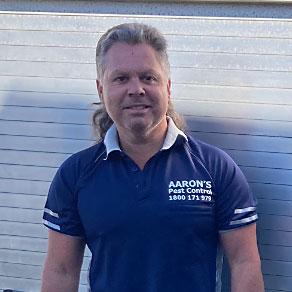
Nests are formed either in trees, in soil mounds or underground. There are 5 main nest types and many species will build more than one type of nest:
- Ground mounds
- Tree nests (outside tree, connected to internal cavity)
- Pole nests (on human structures such as fence posts and telegraph poles)
- Subterranean nests (underground, in soil, stumps and tree bases)
- Tree wood (inside the tree)
Nest humidity and temperature maintenance
Termite colonies are maintained at a high humidity. This protects the thin-skinned workers from drying out. Only when the external humidity is close to 100% can workers leave the nest to forage. This is especially the case for subterranean termite species, which gain most of their water from the soil. These species can only become pests in buildings where a constant water source is available. Indoor plants on pavers are a major cause, as are leaking pipes or roofs. Termites that nest in dry wood don’t have such strong water requirements and may attack wooden structures that are not necessarily very damp.
Nests are usually maintained at a temperature between 25°C – 36°C. This varies, depending on the species, the external temperature and the health of the colony. Healthy colonies are able to maintain this range during very hot and very cold external conditions.
Feeding and diet
Not all termites eat wood. Many species feed on grass and other matter, and are not pests in buildings. Those species that do eat wood, get cellulose, sugars and starches (all carbohydrates) from the sapwood (outer wood) of trees and can also eat any wooden structures, including logs, stumps and human constructions. They usually cannot eat the heartwood (innermost wood) as it tends to be much harder and can have toxins that repel the termites. Protein is obtained by eating fungi growing either in the humid nest – which also helps to keep the nest clean – or from moist wood surfaces.
Many termite species have special gut organisms that help them to break down the woody cellulose into sugars that can be digested. Some species have protozoa (single-celled organisms) that produce enzymes to digest the cellulose while others have bacteria. These organisms are transferred from termite to termite during grooming sessions, especially from adults to young.
